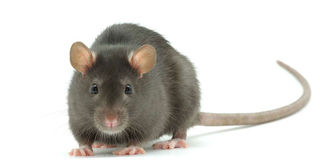Disease outbreaks: In 2004, a deadly disease

Rats are among mammals and reptiles that cause leptospirosis. PHOTO | FOTOSEARCH
In 2004, I was sitting my fourth year end-of-year clinical examination as a medical student. Throughout the academic year, we had spent time in various rotations, lasting eight weeks each, learning the clinical aspect of medicine. The eighth week was always an exam week to end the rotation.
The learning involved full exposure to actual patients because there really is no other way to gain the necessary skills and knowledge.
The clinical examination is the most unpredictable, yet the most important. One would walk into the ward in the morning and is allocated a patient. You had 40 minutes to talk to the patient, take a history of their illness, do a thorough examination and from your findings, come up with a possible diagnosis.
The examiners would then join you and listen to your history and examination findings. They would sometimes seek clarity from the patient, they would ask you to demonstrate both or part of your examinations and they would discuss with you your diagnosis. One was expected to list other possible diagnoses, the tests required to confirm your conclusions and your plan of management for the patient.
It was crazy during the end-of-year examinations when we had to do tests covering all our rotation areas throughout the year. The first week covered written papers while the second week comprised daily clinical exams, with different rotations each time. The end-year exam also included a special viva voce segment (oral exam). We always had to know every single detail of the current disease outbreaks. A good number of us would have to discuss it in the examination.
Haemorrhagic fevers
The country’s 2004 disease outbreak was a strange illness that broke out in Western Kenya, mainly afflicting students in a boys’ boarding school. By the time it passed, 141 people had been infected, 26 of which had died. Being in the main referral hospital for the region, we expected the patients to start streaming in, yet no one knew what it was. Samples collected from the patients had been taken to Kenya Medical Research Institute and we nervously awaited their report.
Two boys died in their local hospital before we received our first referral. By then, the local media houses were awash with news of the possibility of Ebola having made its way to Kenya.
This was because the two boys had developed unexplained haemorrhage, a life-threatening symptom synonymous with haemorrhagic fevers, chiefly Ebola.
The first patient in our wards barely survived 36 hours with us before we lost him. He was only 15 and never recovered consciousness since his admission. He underwent an immediate postmortem conducted by the University’s pathologists.
It was during the postmortem that our Ukrainian professor first mentioned the term leptospirosis. She said the appearance of the internal organs, especially the kidneys, was very characteristic of leptospirosis. She, however, made a disclaimer that it had been 14 years since she had seen a similar presentation in Malawi. She cautioned against making any conclusions before the test reports were out.
That very evening, during the prime news on television, a Kemri report confirmed the strange disease was indeed leptospirosis.
The epidemic raged on for a few more weeks, claiming more lives, but many who came in to hospitals after the identification of the illness received better care and had better outcomes. For us who were studying for our examinations, we pinned charts on our study boards and prepared flash cards on everything leptospirosis.
The examination came and on a sweltering hot afternoon in the North Rift, I came face to face with the external examiner during my oral exam. He told me I had five minutes to shine and asked me to describe the bacteria that caused leptospirosis, its characteristics, transmission to man, its existence in humans and how it caused illness.
My head of department had accompanied the external examiner. He pushed his glasses up and gave me an encouraging smile. My yellow flash cards came to my aid, flipping one after another in my head as I spoke non-stop for 300 seconds.
Basically, this is a bacteria that normally lives in mammals and reptiles, commonly in rats, dogs, cows and pigs. It somehow manages to peacefully exist with its host, living in the kidneys of these animals and being shed out in the animal’s urine. The urine contaminates soil and water bodies and from there, gain access to the human body. This happens through abrasions in healthy skin, animal and rodent bites and waterlogged skin such as swimming in contaminated water, through the mucous membranes or conjunctiva (lining of the eye) or through inhaling particles into the lungs.
The bacteria then enters the bloodstream and spreads through the body, settling mostly in the liver and kidneys. However, as man was never intended by nature to host this bacteria, it is impossible for the two to co-exist, resulting in ill health, and where the bacteria wins, the host dies.
The good news is that early treatment with antibiotics and supportive care for overwhelmed organs such as dialysis for acute kidney failure, goes a long way in reducing deaths. Further, a majority of infections are mild and resolve fairly quickly. The best news is that the drugs required to treat leptospirosis are widely available and affordable.
It is going to be rough for all of us across the world with the Covid-19 pandemic, but together we shall survive this. And when all this is over, we know as sure as the sun rises from the east, medical school examiners shall be waiting for the poor students with crazy questions. Don’t say I didn’t warn you.
Dr Bosire is an obstetrician/gynaecologist


